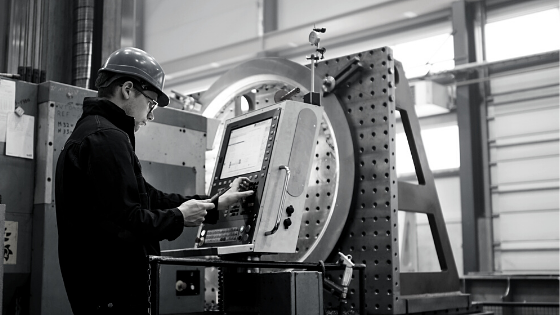The term CNC is an abbreviation for Computer Numerical Control. it is a differentiating factor between a machine that has a controller and one that is manually run. The computer directs the cutting tools based on numeric codes which can be altered using computer software.
The CNC software technology proved to be revolutionary for the metal fabrication industry. It enabled easier production of structures in three-dimension while limiting human involvement in the process. Ever since the industry started making use of CNC software, we can see a boost in quality and consistency. Therefore, this software can be seen used widely.

Due to its popularity, the software developers have come up diverse types of CNC software. But how does one determine which software is best for their business? Not to worry, we have a list of several types of CNC software, you can through this article, and we are sure by the end of the article you will know which type of CNC software is just right for you.
CAM Software
CAM software which stands for Computer-Aided Manufacturing software, functions by reducing production time and eliminating the purpose of drawing on a paper draft. You can simply use the software to instruct and construct. This type of CNC software can easily be controlled using CAM without having to include unnecessary human effort. They not only produce high-volume outputs but are also capable of detecting even the slight imperfections and immediately sends an alert to the operators notifying them of the imperfection detected.
CAD Software
Also known as Computer-Aided Design, this software is used for designing and is responsible for creating the designs of the products that will be produced by the CAM software. The software has two-dimensional as well as three-dimensional drawing methods. The designers have the freedom to create the product on their desktop and review it later for any sort of editing or printing. This helps in reducing production time greatly.
This CNC software is also capable of solid modelling, reusing design components, calculating mass properties of assemblies and parts, programming design optimisation, maintenance of libraries of parts and assemblies, cable routing, aiding visualisation by shading and rotation, surface modelling, wireframe geometry creation, simulating designs without building any physical prototype, electrical component packaging, verifying designs with design rules and other specifications.
CAE Software
Another important CNC software component is CAE or Computer-Aided Engineering. This helps in assisting engineers in simulation, design, analysis, diagnosis, manufacture, planning, and repairing of various machining activities. The tools are a lifeline for engineers and are used by them for day-to-day activities. It can be managed in three phases – Pre-processing, analysis, and Post Processing. The areas where the CAE software is usually used are Kinematics, analysing process simulation for casting, moulding, and dye press forming, thermal and fluid flow analysis, and optimization of products and processes.
Combination of CAD, CAE, CAM Software
Many companies also believe in using all three types of CNC software. These are packaged by the companies into one package and can conduct the entire process. From designing which is done on the CAD software to the analysis of the design on the CAE software, and finally manufacturing which can be controlled by the CAM software.
Conclusion
Therefore, as you can see this how this CNC software has different uses, and each CNC software has various individual strong points, and one single unit may benefit any organisation. However, if you only need to use one component, you can easily use that CNC software and reap the benefits. No matter what, CNC Software is beneficial for these purposes.






















